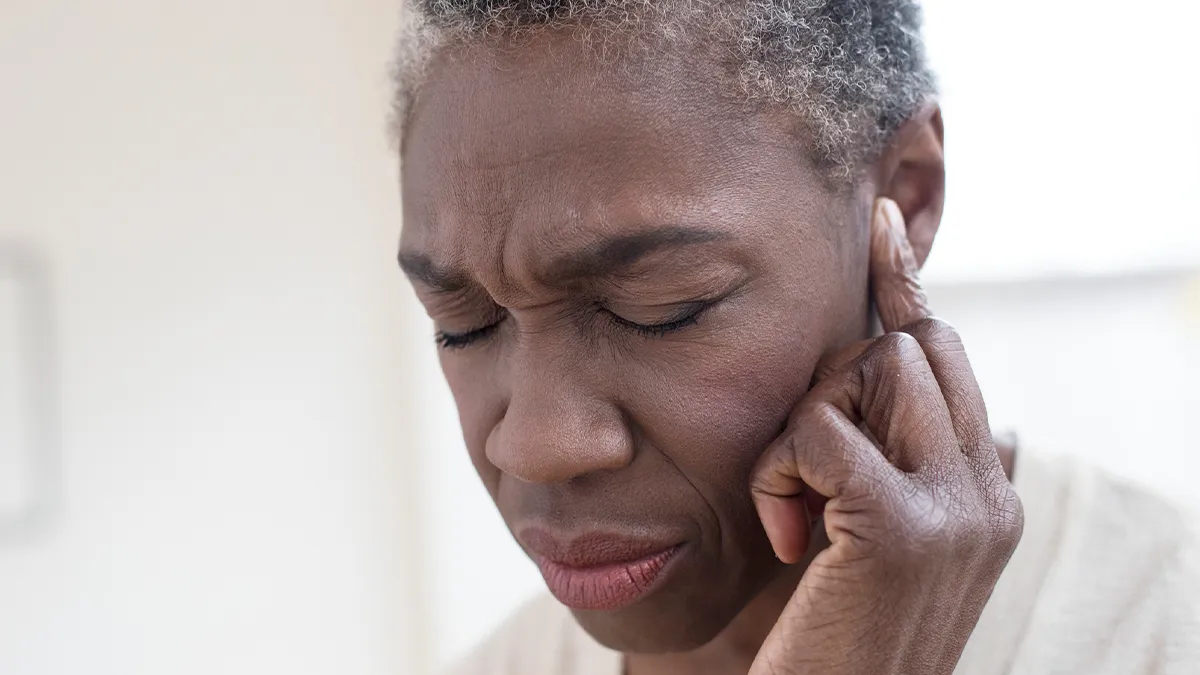Have you ever experienced hearing what seems like a rubber band snapping or a twanging sound inside your ear? It is not uncommon, and while it can be puzzling and even a bit disconcerting, there are many potential causes behind this auditory sound.
In this article, we will discuss the causes of rubber band sound in your ear. So, let’s proceed.
Causes of Rubber Band Sound In Your Ear
1. Earwax Buildup
Earwax, scientifically known as cerumen, is a natural substance produced by our bodies to protect the ear canal and keep it lubricated. Normally, excess earwax finds its way out of the ear on its own. However, certain habits, such as using cotton swabs or earplugs, can inadvertently push earwax deeper into the ear canal, leading to a troublesome buildup.
Symptoms Earwax
- Ear pain and itchiness
- Partial hearing loss
- Discharge or odor from the ear
- Ringing or strange sounds in the ear
- Ear fullness or discomfort
Treatment Option
Consult a doctor, preferably an ear, nose, and throat (ENT) specialist, if you suspect an impacted wax buildup. They may prescribe ear drops to soften the wax for safe removal. In some cases, an ear micro-suction tool may be used for gentle removal. Avoid DIY methods, as they can risk damaging the eardrum.
2. Temporomandibular Joint (TMJ) and Muscle Disorders
Issues with the temporomandibular joint (TMJ), responsible for jaw movement during activities like eating and speaking, can trigger unusual sounds and sensations in the ear.
Common Symptoms
- Headaches
- Facial or neck pain
- Clicking or popping sounds when moving the jaw
- Limited jaw movement
- Earaches accompanied by ringing or buzzing sounds
Treatment Option
For mild symptoms, self-care measures like avoiding gum chewing and consuming soft foods may suffice. Massaging and stretching the jaw, along with hot or cold compresses, can help reduce discomfort. Dentists or ENT specialists can provide mouthguards for nighttime use. In severe cases, surgery or corrective dental treatments may be necessary.
Eustachian Tube Dysfunction (ETD)
The Eustachian tubes connect the middle ear to the upper throat, regulating air pressure in the ear. Dysfunction in these tubes can result in unusual auditory sensations.
Common Symptoms
- Ear pain and discomfort
- Ringing, clicking, or popping sounds
- Ear fullness or blockage
- Hearing difficulties
Treatment Option
If severe symptoms persist for more than two weeks, consult an ENT specialist. They can recommend at-home remedies and prescribe medications to alleviate pain. In some cases, procedures like pressure equalization tube (PET) implantation may be required to normalize ear pressure.
Ménière’s Disease
Ménière’s disease remains mysterious, with an unknown cause. It presents as episodes of vertigo, dizziness, vomiting, and headaches, often accompanied by a unique set of ear-related symptoms.
Common Symptoms
- Vertigo (spinning sensation)
- Ringing, clicking, or popping sounds in the ear
- Ear fullness
- Hearing loss or muffled hearing
- Loss of balance
Treatment Option
Consult a healthcare professional if you experience these symptoms. A series of tests, including hearing and balance assessments, may be performed. Treatment options include medications for vertigo and diuretics to regulate fluid balance. In severe cases, surgical interventions or hearing aids may be considered.
Otosclerosis
Otosclerosis affects the tiny stapes bone in the middle ear, hindering its ability to vibrate correctly and causing hearing difficulties.
Common Symptoms
- Hearing loss
- Dizziness or vertigo
- Ringing, clicking, popping, roaring, or hissing sounds in the ear
Treatment Option
Consult an otolaryngologist (ENT specialist) for a thorough examination, which may include CT scans. Treatment options range from surgery to manage the condition to wearing hearing aids. In some cases, watchful waiting may be recommended.
Conclusion
The rubber band sound in your ear can be attributed to various underlying causes, each requiring specific attention and treatment. From earwax buildup to temporomandibular joint (TMJ) and muscle disorders, Eustachian tube dysfunction (ETD), Ménière’s disease, to otosclerosis, these conditions can manifest with auditory sensations.
If you ever encounter such sounds in your ear, it is good to consult a healthcare professional, preferably an ear, nose, and throat (ENT) specialist.






